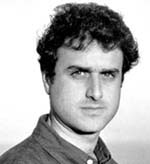 |
Will more than 100 billion digital images be captured worldwide in 2005?
March 2004
|
 |
||||||||||
|
Nine months ago I wrote an article in the Digital Journalist "Why will wireless camera phones revolutionize the photography industry?" and after spending a week in Las Vegas at the largest US photographic conference I am still confident that camera phones will revolutionize the photography industry. Additionally, many in the photography industry will soon get blindsided again by digital imaging technology's impact on how photography is captured and shared. Camera phone adoption is sneaking up on the industry just like the digital camera tidal wave transition from film to digital did. In 1997, I believed that digital cameras would revolutionize the photography industry. Both camera companies and photographers thought I was crazy. I was asked why people would want to make poor quality photos with digital cameras and publish photos to websites. Also in 1997, award winning photojournalists said that they would never shoot digital. Now several of those same photographers are 100% digital and think film shooters are Luddites.
Even though it might have taken a couple more years for digital cameras to reach the masses, digital camera penetration has now surpassed 20% of the market while film sales recently decreased for the first time in history. In the coming years, camera companies will still own the higher quality camera market, but a major tipping point will occur as HP, Microsoft, Nokia, Sanyo, Samsung, and Sony aggressively compete with Nikon, Canon, Kodak and others for market share of digital image capture devices. The Digital Imaging Marketing Association (DIMA) hosted an intriguing seminar relating to camera phones before the main PMA conference, and it proved to be the most popular panel at the pre-show. Future Image analyst, Tony Henning shared some statistics from the GFK group that "digital camera sales are growing strongly at more than 60% a year from 11 million in 2000 to 50 million in 2003 but these numbers dwarfed in both scale and velocity by camera-phones " sales have more than doubled every year since their introduction " from fewer than a million in 2000 to nearly 70 million this year. The increase last year was 350 percent. Japanese consumers bought 40 million camera-phones in 2003, up from about two million in 2001." Henning forecast that "in 2005 there will be 70 billion digital images captured by new devices. 63 billion images will come from camera phones and 7 billion images will be taken with digital cameras." InfoTrends, another leading industry research group also confirmed the same industry trend that digital cameras are out selling film cameras and camera phones are outselling digital cameras. The InfoTrends Wireless Imaging End User Study, published in September 2003, revealed that "more than 25% of cell camera owners are 'satisfied' and another 24% are 'very satisfied' with picture quality." This leaves little doubt that consumers will be ecstatic with higher mega-pixel camera phones. Well, times have changed and continue to change rapidly! Just last year most people in the industry were questioning whether people would want to make pictures with their cell phones -- the statistics above reveal that they do! These statistics suggest that a core effect from the growth of digital capture devices will create a need for more digital storage, management, sharing, search and distribution methods among friends, associates and buyers around the world. Market demand and Moore's law will help bring two, three, four, and maybe even five mega-pixel camera phones to the world wide market by Christmas 2004. Soon, professional photographers will have little excuse not to add one of these tools to their camera bag. Cell camera phones are simply another tool for photographers to make pictures. They can function as a replacement for a Polaroid and they can ease the guilt that photographers feel when they leave the house without a camera. People always take their cell phone, and soon their cell camera phone, every where they go. Professional photographers should choose a camera phone for its phone features first and think of the camera as a valuable additional feature. There are several choices on the market today, but the best camera phones have no less than a 640x480 resolution! In fact, if you are presently on the fence about buying a cell camera phone, it might make sense to wait till later this year when you can get at least a 1-mega-pixel camera phone as the 640x480 versions will soon be out of date. When looking for a camera phone, choose one that meets your requirements as a phone, organizer and camera which will easily transmit photos to your PC, web site, or photo blog by email, infrared or locally via a cord. Beware of companies that try to automatically lock you into their proprietary photo storage systems – these are insufficient for professional photographers and consumer use. The Nokia 3650 has 640x480 resolution camera phone has been a best-seller in many countries. I understand that the Sanyo 5300 which has 640x480 resolution is also very popular in America. I personally choose the Sony Ericsson P-800 in February 2003 because I wanted a device that had four important features: PDA, Camera, Phone and Tri-Band. There were not many camera phones to choose from then. I look forward to replacing my camera phone with a 1-megapixel version as soon as they are available. Several of my associates love the Treo 600 because of its Palm-based operating system; they have replaced their cell phone, PDA, Blackberry and point and shoot camera with that one device. Daily I see people making pictures with their camera phones and it usually doesn't surprise me. However, recently I was in a dark jazz club and within minutes I saw five different people hold up camera phones in the front row to capture rocking moments during the show. There wasn't much light in the club and none of the cell cameras had a flash, but each photographer made pictures and immediately shared them with others around their tables. All who viewed the images on the digital screens quickly smiled, laughed and reached for the phones to make their own pictures. The instant visual communication was obviously gratifying. In the near future, professional photographers with one to four megapixel camera phones will be able to make higher quality pictures anywhere and wirelessly transmit them to their archives or directly to clients on deadline for publishing before they get back home. Below is a digital photo quality quiz: Which of the following photos from my Love the Living of Life series were made with a camera phone, a consumer digital camera, or a professional high end digital camera?
Answer: All three were made with my Sony Ericsson P-800 camera phone - you always need the correct tool for the job but the image content is and will always be king! Soon, an image from a camera phone will be used for the cover of a high profile mainstream magazine. Camera phone photos by professionals and consumers have been published in newspapers around the world. This is just the beginning. Glossy magazines publish screen grabs from war television coverage on their covers and those images are frequently inferior to camera phone images. I am surprised that a high profile magazine hasn't published a camera phone photo on its cover yet. The image that depicts a story most uniquely will always be the one that is purchased rather than the higher quality image. The buying and selling market is only going to get more competitive as retrieval and distribution systems are developed to help photographers deliver their images to potential buyers faster. Professionals should have the advantage because they are more likely to make imagery that is more compelling, provocative and saleable - if they can get their imagery to clients quickly then they will stay ahead of non-professional photographers. Everyone at PMA was bragging about how their mobile imaging services were going to help photographers print and order products from their camera phone photos. This is going to be much more difficult than they expect or hope! People that make pictures with cell phone cameras follow the same patterns as digital photographers. People make pictures and want to share them instantly via the digital screen of their capture device. Afterwards, these photos end up being dumped onto hard drives, storage devices or photo web sites and then hardly ever seen, shared or printed again. An easy solution to help people organize, search and share all of the billions of new pictures has not been created yet, but it is still a Holy Grail of the photography industry! We must liberate that analog and now digital shoebox. We will just have to wait and see who will provide the services that will help users easily find, share and buy products with their photos. If photos can't be easily searched by the creator, friends or even potential buyers then they have absolutely no value in my mind. We all make pictures to visually communicate and if no one sees the photos after they are created, then we have failed our core goal. Feel free to subscribe to my Digital Railroad monthly newsletter at http://www.digitalrailroad.net if you want to learn more about my perspective on relevant digital imaging topics, technology and events. In conclusion, most PMA exhibitors and the photography industry are still focused on analog photography output, concentrating on products that make printing easier and better, whether it's from film, digital or camera phones. However, I believe that the masses will become more and more enthralled with visually communicating and sharing digital photos rather than with photo print products. In the years to come, I also believe that professional photographers will leverage digital technologies to more easily visually communicate and make more money selling their digital images to businesses and consumers for viewing on digital devices - than they do now with print product sales. I can't wait until over 100 billion digital images are captured in 2005!
© Evan Nisselson
|
|||||||||||
|
Write a Letter to the Editor
Join our Mailing List
© The Digital Journalist
|


